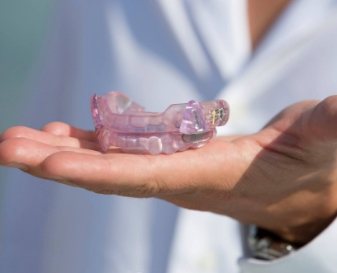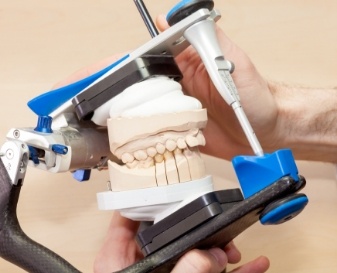TMJ Treatment – Fresno, CA
Easing Jaw Pain with Customized TMJ Treatment

Dr. Jake Weissich has years of experience screening for and treating a wide range of TMJ disorder cases, from milder to severe. Many other local dentists even send their patients to him for TMJ treatment in Fresno because of his expertise in this specialty. If you’re experiencing one or more symptoms of this condition, contact our dental office today to schedule a TMJ screening and learn more about ways to find relief. We look forward to helping you reclaim your life by minimizing and eliminating your discomfort.
Why Choose W Dental - Fresno for TMJ Treatment?
- Happily Accepting Referrals for TMJ Treatment
- Extensive Screenings for TMJ Disorder
- Wholistic Dentistry Focused on Overall Health
Symptoms of TMJ Disorder

The signs that you experience can vary depending on the severity of your condition. If you have one or more of the following symptoms of TMJ disorder, our team recommends scheduling a screening to ensure your condition doesn’t lead to other issues:
- Aching in and around one ear
- Facial aching and pain
- Pain when chewing
- Lockjaw
- Jaw tenderness
- Difficulty opening and closing the mouth
- Pain that spreads to the face and neck
Treatment Options for TMJ Disorder

Upon receiving a TMJ diagnosis, our team may recommend occlusal splints or equilibration to provide you with relief and stop the progression of your condition.
Occlusal Splints

Occlusal splints are custom-crafted orthotic devices that you wear as you sleep. They’re designed to gently shift your jaw into its ideal position to distribute pressure evenly among both of your temporomandibular joints, minimizing pain the next day.
Occlusal Adjustments/Equilibration

Jaw pain can be caused by misshapen teeth or ill-fitted restorations. Equilibration is when we’ll go in and make slight alterations to your dental structure to even out your bite and eliminate additional strain on one or both of your joints.
TMJ Treatment FAQs
Can TMJ Be Cured Permanently?
If you suffer from jaw pain caused by temporomandibular (TMJ) pain, sometimes it will resolve on its own, but often it needs treatment from a professional like Dr. Jake. While some treatments can offer temporary relief, we focus on proven methods like occlusal splints and equilibration that can permanently address jaw tension and the underlying causes of TMD. So, yes, it’s possible to cure your TMJ issues permanently with the correct application of treatments that fit your needs and lifestyle.
Can TMJ Be Fixed with Clear Aligners?
Sometimes TMJ disorders can be caused by a misalignment of your teeth and jaws, especially overbites and underbites. These conditions can unevenly distribute your bite force, placing more pressure on your jaw joint. In these cases, clear aligner systems like ClearCorrect and SureSmile are ideal for realigning your teeth and jaws for relief. However, it’s important to note that clear aligners take time to work, sometimes months. So, while we trust these treatments to help our patients in a long-term way, they’re not the best solution for instant results.
How Long Does It Take for a TMJ Splint to Work?
Once you receive your occlusal splint appliance, it needs to be worn to bed every night. Once you get into the routine, your symptoms may fade quickly. However, it will take time and patience to see the full extent of the treatment’s results. After six weeks, most of our patients report dramatic improvement in their TMJ discomfort. However, it usually takes between three and six months to fully experience the relief that occlusal splints offer. It’s important to keep in mind that this is an average estimate. Every patient is built differently, and some may experience faster results than others.
How Long Does Occlusal Equilibration Take for TMJ?
Occlusal equilibration uses small, strategic adjustments to the shape and size of your teeth to give you relief from your TMJ discomfort. Though the treatment is relatively quick, the timeframe in which they soothe your symptoms can vary. This can be due to physiological differences for each patient but can also be affected by the length of the procedure itself. The treatment generally takes one to three appointments to complete, so you may not see results until after your second or third treatment. However, the appointments are usually short, and most patients begin to feel relief very soon after their last treatment.
